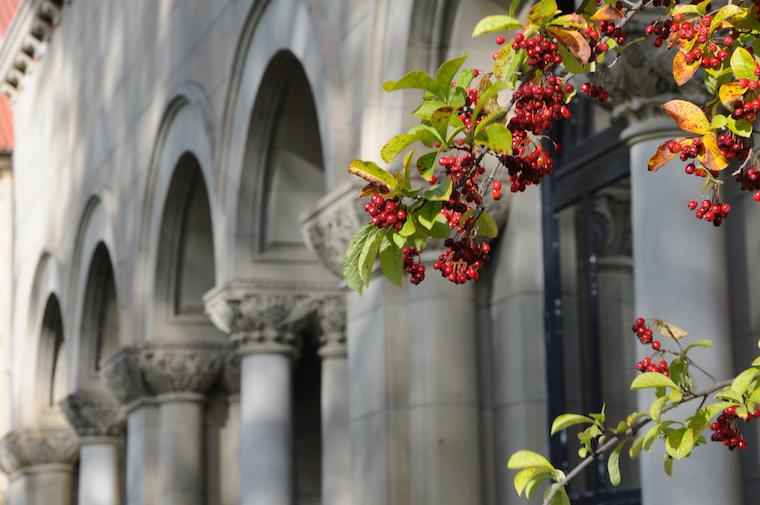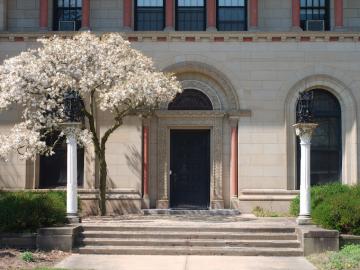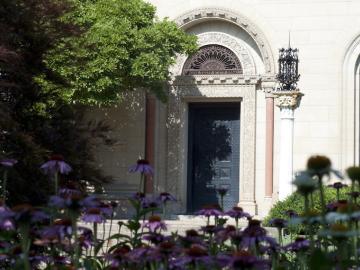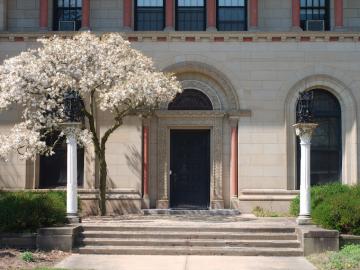News Releases
Report: Oberlin College generates $143 million in annual spending for local economy
September 25, 2019
Communications Staff

OBERLIN, OHIO— Oberlin College contributes more than $143 million in annual spending to the local economy, according to the college’s first comprehensive economic impact analysis.
The results included in “Our Community: 2019 Oberlin College Community Impact Report” released today measure the college’s direct and indirect spending, overall economic output, cultural contributions and impact on the community’s residents, workforce and employers.
“This report demonstrates how the college and town have always been physically, socially, and economically intertwined,” Oberlin College President Carmen Twillie Ambar said. “Often, the intangibles of community service and instruction can be overlooked when assessing the importance of an institution. We at Oberlin are proud of our community integration, and the impact the college has on quality of life across our region.”
In 2019, Oberlin College will directly and indirectly influence more than $200 million in expense output, directly and indirectly influence over 4,000 jobs, and influence just over $29 million in taxes, according to the report.
Some additional facts in the report:
- About 7 percent of Oberlin’s 2,840 students come from Ohio
- More than 600 graduates live and work in Lorain County
- Almost 700 graduates reside in Cuyahoga County
- Oberlin students annually engage in 115,000 hours of community service
- The majority of Oberlin’s 1,100-plus employees live and raise their families in Lorain County
- Over the past 18 years, 79 Oberlin High School graduates have attended Oberlin College tuition free.
The college’s contributions to the quality of life in the community are outlined as well, including its ownership of community icons such as The Hotel at Oberlin and the Apollo Theatre.
The college’s Bonner Center for Community-Engaged Learning, Teaching, and Research provides the opportunity for students and faculty to connect with community service opportunities in Oberlin and beyond, the report said.
“Oberlin is committed to community-engaged learning at facilities such as the Bonner Center,” Ambar said. “We also play a significant role in our community’s sustainability efforts. Five buildings on campus have been constructed or renovated in accordance with the Green Building Counsel’s LEED Silver status or higher.”
The college contracted with IMPLAN of Huntersville, N.C., to conduct the study to determine the college’s financial and cultural impacts on the community. The company used public economic and institutional data, along with information from the college, as the basis for its analysis.
The full report can be viewed here.
Contact:
Scott Wargo
Director of Media Relations
440-775-5197
Scott.Wargo@oberlin.edu
- ### -
Tags:
You may also like…
Oberlin College to Help Create a National Coalition of Liberal Arts Institutions to Examine Race and Equity on Campuses
November 13, 2020
Oberlin College announced that it is partnering with five other prominent institutions to establish the Liberal Arts College Racial Equity Leadership Alliance (LACRELA) to foster greater understanding on matters of race and equity at liberal arts institutions across the country.
Oberlin College Reaffirms its Commitment to Accessibility with New Scholarship
September 25, 2020
To help families address the increasing cost of higher education, Oberlin College will award a $10,000 Oberlin Commitment Scholarship to all new students who apply and enroll in fall 2021. The scholarship will be renewable for up to four years for students pursuing degrees in either the College of Arts and Sciences or the Conservatory of Music, and up to five years for students who are pursuing a double degree.
Oberlin College Establishes Presidential Initiative on Racial Equity and Diversity in Response to National Distress
August 28, 2020
President Carmen Twillie Ambar and Oberlin College announced today the launch of the Presidential Initiative on Racial Equity and Diversity in response to increasing injustice and racial tensions in America. The Presidential Initiative will elevate and advance Oberlin’s more than 180-year commitment to the education and rights of Blacks in America and will provide the framework for faculty and students to address issues of violence, police-community relationships, and racial injustices.


